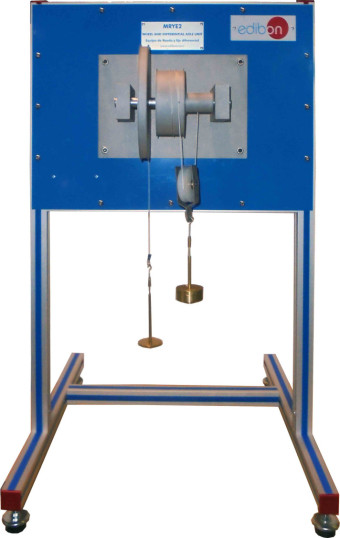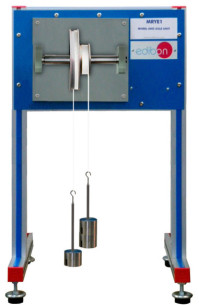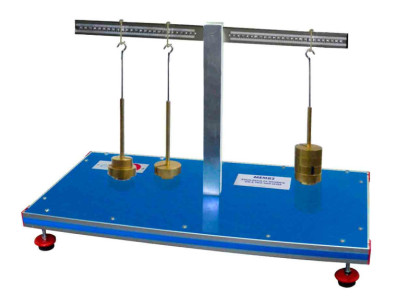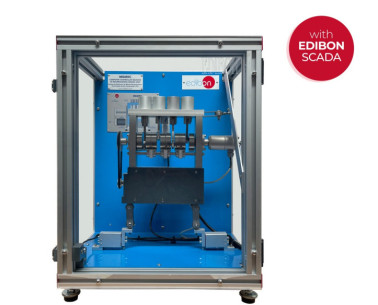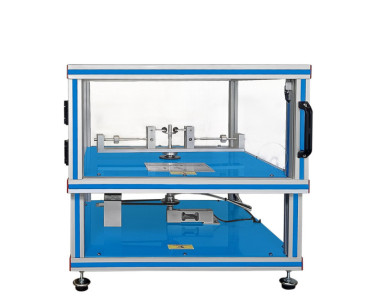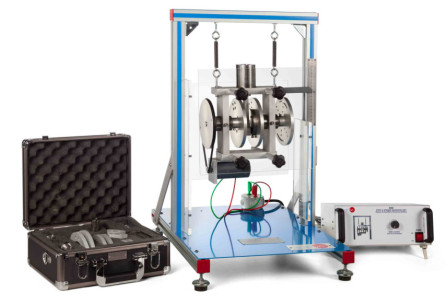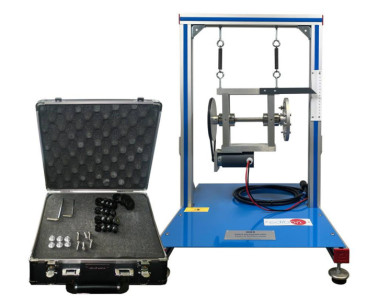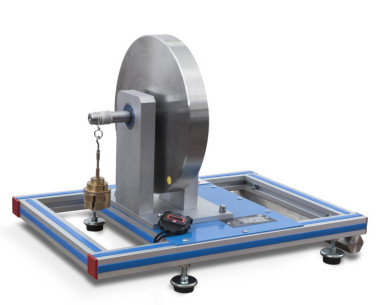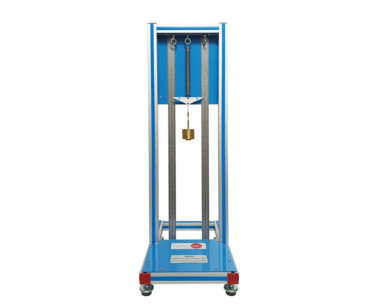MRYE2 Unité de Roue et Axe Différentiel
SYSTEMES INNOVANTS
The Wheel and Differential Axle Unit, "MRYE2", is a unit that allows for investigating the mechanics of a wheel and differential axle mechanism and demonstrating the force reduction on a differential pulley block.
Expansions
Laboratories
NOUVELLES LIÉES
Description Générale
The Wheel and Differential Axle Unit, "MRYE2", is a unit that allows for investigating the mechanics of a wheel and differential axle mechanism and demonstrating the force reduction on a differential pulley block.
A wheel, consisting of a pulley with a major diameter than the differential axle assembly consisting of a pulley of diameter 111 mm (larger axle) and a pulley of diameter 33 mm (smaller axle). The wheel and differential axle is secured to a shaft supported on ball bearings. Cords and weight holders are provided.
The wheel and the differential axle are fixed together to form a differential pulley block. The forces act, on one hand, directly on the peripheral of the pulley of the wheel and, on the other hand, through a loose pulley on two pulleys of differential axle. Easy to exchange weights permit the load to be varied so that equilibrium is obtained.
A single cord is attached to the wheel and wrapped around a number of times before leaving it hanging vertically. A weight holder is added to the end.
A second cord is attached between the larger and smaller axles of the differential axle. A weight holder and a loose pulley are hanged from the cord of the differential axle, which allows for a vertical suspension while the axle rotates.
Des exercices et pratiques guidées
EXERCICES GUIDÉS INCLUS DANS LE MANUEL
- Study of the equilibrium of forces.
- Study of the equilibrium of moments.
- Demonstration of the force reduction in a differential pulley.
- Determination of the acceleration ratio and comparison with the calculated value.
- Study of the relationship between force reduction and travel of the cord.
UNITÉS SIMILAIRES DISPONIBLES
EQUIPEMENT COMPLEMENTAIRE
Unité pour l'Étude de l'équilibre de Moments dans un lévier à deux Bras
Unité de Balancement à Piston, Contrôlée par Ordinateur (PC)
Unité d'Étude et Analyse de Cames
Unité de Démonstration de la Force de Coriolis
Unité d'Étude de Force Centrifuge
Gyroscope
Unité du Gouverneur Centrifuge
Unité d'Equilibrage Statique et Dynamique
Unité d´Équilibrage Simple
Unité de Volant d’Inertie
Unité de Roue et Axe
Unité d'Étude de la Loi de Hooke
Qualité
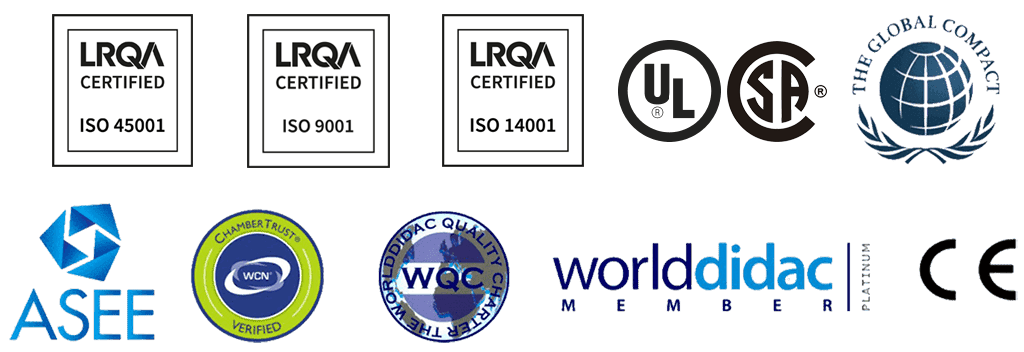
Service après vente

 Préférences sur les cookies
Préférences sur les cookies

